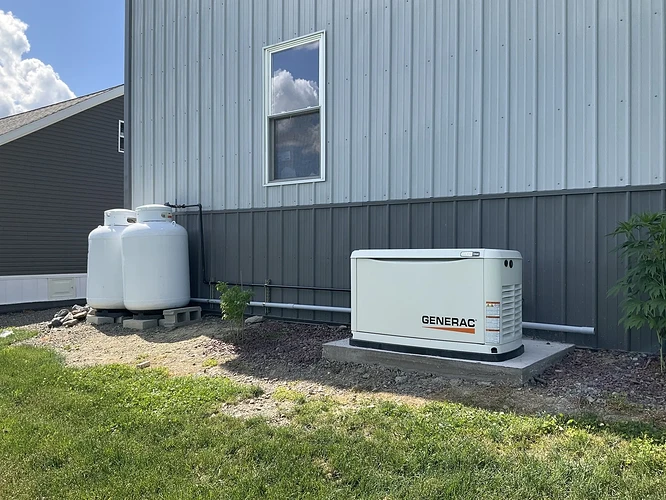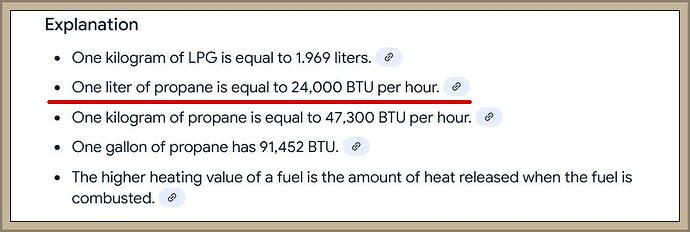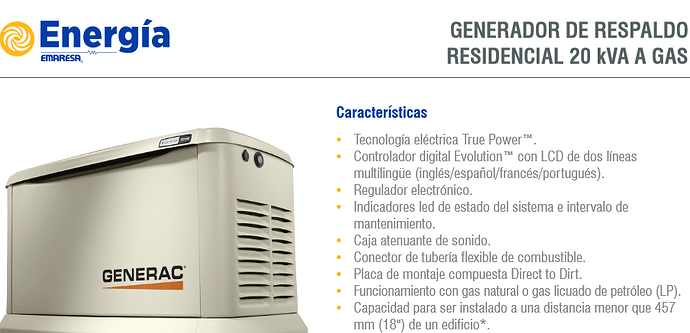As an offshoot of this post on alternative standby power sources, I realized that one option hadn’t been mentioned: propane gas.
This site provides info on calculating gas consumption, and a decent-sized gas tank is probably needed if operation over days, rather than hours is envisaged.
Gas consumption can be calculated here.
Scaling down the US whopper-size continuous consumption of 4kW used in that example to something more reasonable for Chilito, say 500W continuous, I got the following results:
500W ≈ 1HP
BTU = (HP*10,000) = 10,000 BTU/hr
According to the above table:
The calorific value of 1 Litre of LPG = 24,000 BTU/hr
So with 500W continuous consumption = 10,000/24000 = 0.42L/hr.
A 15kg balón contains approximately 29 Litres of gas, so could provide 500W continuous power for around 71 hours.
The only drawback I could discover to this setup is the actual price of the gas:
In 15Kg cylinder format it currently runs round CLP $655/Litre. So 72 hours continuous operation would cost CLP $19,000, the price of one balón.
Tank gas (a granel) is much more expensive, at around CLP $1286/Litre. I can only think the difference is due to amortizing the tank costs over its 10-year SEC-mandated lifetime.
Still, as a source of stored energy, with automatic switchover included, from a reliability aspect it makes a lot more sense than some of the gimcrack renewable solutions offered.


